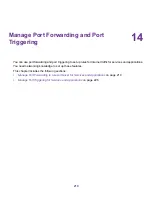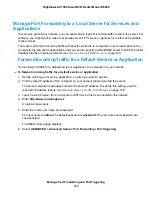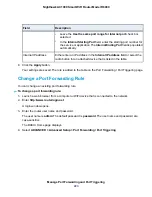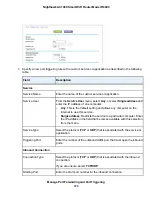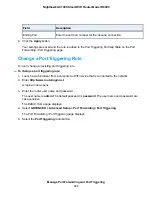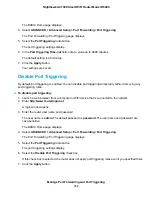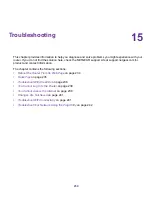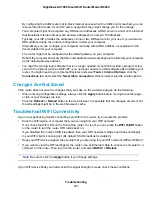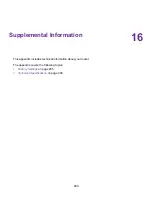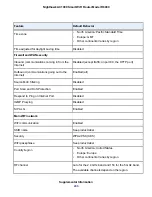
Your settings are saved.
Application Example: Port Triggering for Internet Relay Chat
Some application servers, such as FTP and IRC servers, send replies to multiple port numbers. Using
port triggering, you can tell the router to open more incoming ports when a particular outgoing port starts
a session.
An example is Internet Relay Chat (IRC). Your computer connects to an IRC server at destination port
6667. The IRC server not only responds to your originating source port but also sends an “identify” message
to your computer on port 113. Using port triggering, you can tell the router, “When you initiate a session
with destination port 6667, you must also allow incoming traffic on port 113 to reach the originating
computer.”
The following sequence shows the effects of this port triggering rule:
1.
You open an IRC client program to start a chat session on your computer.
2.
Your IRC client composes a request message to an IRC server using a destination port number of
6667, the standard port number for an IRC server process. Your computer then sends this request
message to your router.
3.
Your router creates an entry in its internal session table describing this communication session between
your computer and the IRC server. Your router stores the original information, performs Network
Address Translation (NAT) on the source address and port, and sends this request message through
the Internet to the IRC server.
4.
Noting your port triggering rule and observing the destination port number of 6667, your router creates
another session entry to send any incoming port 113 traffic to your computer.
5.
The IRC server sends a return message to your router using the NAT-assigned source port (for
example, port 33333) as the destination port and also sends an “identify” message to your router with
destination port 113.
6.
When your router receives the incoming message to destination port 33333, it checks its session table
to see if a session is active for port number 33333. Finding an active session, the router restores the
original address information replaced by NAT and sends this reply message to your computer.
7.
When your router receives the incoming message to destination port 113, it checks its session table
and finds an active session for port 113 associated with your computer. The router replaces the
message’s destination IP address with your computer’s IP address and forwards the message to your
computer.
8.
When you finish your chat session, your router eventually senses a period of inactivity in the
communications. The router then removes the session information from its session table, and incoming
traffic is no longer accepted on port numbers 33333 or 113.
Manage Port Forwarding and Port Triggering
233
Nighthawk AC1900 Smart WiFi Router Model R6900

